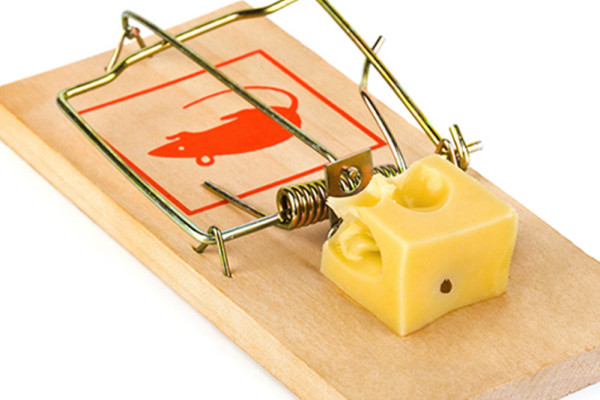Super bowl Sunday is this weekend. And like many other viewers, I mostly watch it for the ads.
Not that I’ll buy anything from them, they’re just much more entertaining than usual. Plus a ton of money was spent on these commercials, so they’re bound to be good (or at least good-er).
But that’s the thing; consumers are getting better and better at ignoring mass media. So while companies are spending more and more money on big advertising, it’ll end up making less and less of an impact. We’re just so over-saturated with it, and everyone is vying for our attention. They all start to sound the same.
So what’s the answer, especially if you’re a small business and in no position to compete with the likes of Pepsi during Super Bowl Sunday?
The solution? Targeted marketing.
Basically, you need to niche yourself. And be phenomenal while you’re at it.
I just finished reading Purple Cow by Seth Godin, and it’s all about the importance of standing out. He argues that everyone is familiar with brown cows. But a purple cow? Now that would be something spectacular. That would get noticed.
If you’re running a small business, doesn’t matter what, then you need to be a purple cow of some kind.
Just being a little bit better, or a little bit cheaper, or a little bit whatever isn’t good enough anymore. The problem is that being only a “little bit” fits in with everyone else; because, “just a little bit” is what everyone else is trying to do anyway. We, as humans, just don’t like standing out much. Standing out invites criticism. Standing out is risky.
You cannot be everything to everyone. Click To Tweet
But there’s the rub: we cannot be everything to everyone. It’s a simple fact, you just can’t make everyone happy. So stop trying. This is where niching and targeted marketing comes in.
And this got me pondering: how does one niche anyway?
I’ve been thinking a lot about niching myself. And it’s hard. I’m afraid to get stuck in a rut, afraid to turn down projects. I’m afraid I’ll get bored, or that I’ll get boring. I’m afraid to say no.
But I’ve just started realizing that when you say “no” to something, you’re actually saying “yes” to something else.
The reverse is also true. When I say “yes” to a less than ideal project, I’m potentially turning down a better one. So it’s important that I say “no” more often. Saying “no” is what building a niche is all about.
So this brings us back to niching. Where does one even start?
The first place to start is to find out the answers to these five key questions:
- What are you excited about?
- What knowledge do you love sharing with others?
- What are you good at?
- What do you see yourself excelling at down the road?
- What is your most common request that you get?
To help you out, I’ll use myself as an example:
- I’m excited about building brands for small businesses
- I love sharing knowledge about branding and marketing with others
- I think I’m pretty good at creating brands and logos from the ground up
- I see myself excelling at creating brand identities down the road
- The most common request that I get is for logo design
So evidently, I should start specializing in creating brand identities for companies.
Now your turn!
I’ve found the key is to always follow your passions when it comes to niching, that way you won’t get bored (or worse, boring).
The second most important thing is, you need to be clear about what you have to offer.
What is the primary focus of what you’re doing?
Stop and think about the ways in which you differ from your competition. Do you do it faster than them? Insanely better? Offer a guarantee? Hand deliver their order once it’s done? Once you’ve figured that out, you now have what is commonly known as your unique selling point, or USP.
You need to be clear about what you have to offer. Why should anyone buy from you? Click To Tweet
Because what it really comes down to is this: why should anyone buy from you?
Your customers have a hundred other choices, so you need to tell them why they should choose you. Or even better, make the choice easy for them by being the only one that does what you do.
By not defining what you have to offer it’s easy to fall in the dreaded jack-of-all-trades ditch. Click To Tweet
By not defining what you have to offer it’s easy to fall in the dreaded jack-of-all-trades ditch.
I’m sure you heard the phrase, “Jack of all trades, master of none?” I want you to think about Yoda for a minute. Yes, Yoda. Everyone’s favorite little green guy from Star Wars. Now he’s a Jedi MASTER. Do you think he spends his days shooting hoops? Or perfecting his needle work? No. He uses his time to perfect his Jedi Master skills.
No one says to their friend, “yeah, I recommend Bob, he’s an expert at everything!” No, when someone needs a plumber they don’t want someone’s nephew who is also an electrician. Water and electricity don’t mix.
Another pitfall of the jack-of-all-trades is that it quickly becomes a race to the bottom. People start selecting their service provider based on price alone. Once you start down that slippery slope, it’s hard to come back.
But if you specialize? Then you’re an expert and can command a higher price, and people will pay it for your expertise. You’re in a better position to build a reputation and ultimately, charge more and stay busy. You’ll end up with better clients and better projects.
And that’s a lovely place to be, big game or no.
What about you?
Are you a jack-of-all-trades or do you niche? Which one has worked better for you?





5 Comments. Leave new
Good read Sheila. I’ve been battling the “specialize” vs “jack of all trades” predicament for a while now and still haven’t decided on any particular niche, even though I know I probably should.
Like you, I’d prefer to specialize in identity design / branding / logo design, but I’ve found it difficult to find enough work strictly in that particular area to justify the move. Then again, maybe I would if that was my speciality.
I see designer’s like Graham Smith, Jeff Fisher and David Airey seemingly doing well specializing, but they also have large followings to warrant such a niche.
Maybe I’ll grow the balls to make the move one of these days 🙂 Now I’m curious to see how you do if you decide to narrow your services. Oh, and thanks for the mention of the “Purple Cow”…I’m gonna have to check that out one of these days.
Hey Derek!
Always good to see you 🙂 Agreed, I’ve been forever struggling with the same.
I finally decided it’s time to woman-up and stick with something 😉 Mostly I’ve just seen a trend in the type of work I a) enjoy and b) get the most clients from. So in a sense it’s been decided for me, it’s just what the market needs right now. But that can always change. I’ll let you know how it goes!
Definitely recommend “Purple Cow,” can’t go wrong with Seth Godin 😀
Great advice.
I find myself in the Jack-of-all area as well. I think part of that is because I am relatively new to the freelance world so I take the jobs where I can get them to make sure the revenue is coming in.
Full branding and logo design has def been my bread and butter, and I would love to make that my niche working with entrepreneurial/creative types like myself.
I have found that I am becoming an expert in a few areas and that has helped me not fall into the Jack-ditch but it also makes things complicated because its hard to choose just one niche to chase after. (I design and am developing a few product lines and have other irons in the fire in other industries)
Great advice, Sheila! Yes, you are right! Of all the niched designers I’ve been talking to, just a few have chosen their niche in an “organized” way. Most have kind of stumbled upon their future niche. They worked hard, tried different things, and then some day they got traction for a particular type of jobs or clients, and decided to go all in.
Also, when considering niches I think it’s beneficial to go at least one level deeper than e.g. “identity design” or “packaging design.” Of course, that takes even more courage, but in reality there are a lot of big enough design niches out there. That’s where the niche magic happens for most designers. One such deep niche example would be John Hartwell, who specializes in identity design for sports brands. Another example is Scarlett Rugers who specializes on book cover design for independent authors. (you can read both their niche stories on my blog)
Hi Thomas, thanks for reading!
You’re totally right, it’s better to be more intentional about where you niche. But of course, I think it’s wise to see which way the winds are blowing i.e. I see a lot of designers who want to do something specific, like say, be an anime designer, when the market’s either already flooded or there’s zero demand for that skill.